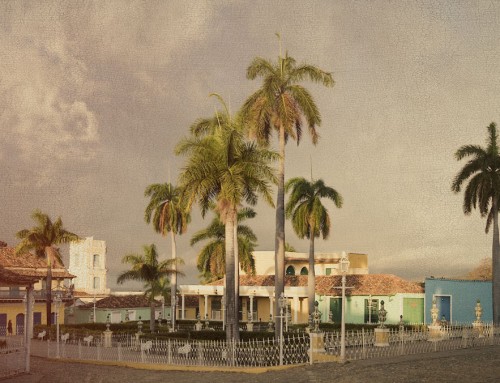If you are looking to switch from Adobe Lightroom to Exposure X3, this article is for you. Exposure offers many unique attributes including a lightning-fast, catalog free design, robust organizing tools, and gorgeous special effects. After they try Exposure, many people prefer its faster, more intuitive workflow. We’ve answered plenty of questions about how to migrate data from Lightroom to Exposure, so we put this guide together to help with that.

Before you begin, there is one important caveat to mention. If an Exposure sidecar file already exists for an image, Exposure will ignore Lightroom’s data to keep from merging information that could cause conflicts. Make sure to complete the steps outlined in this guide before you start performing photo editing with Exposure.
What data can be brought over to Exposure from Lightroom?
Much of the organizational information added in Lightroom can be carried over to Exposure. Lightroom normally stores changes to images in a catalog file, but you can have Lightroom write those changes to a location Exposure can access.
Some of the edits made to your images in Lightroom are recognized by Exposure. They are:
- Crop
- Rating
- Image SIze
- Image Orientation
- Color Labels
- IPTC Copyright, Name, Address, and Email
Exposure will not recognize any visual edits you have made to your photos in Lightroom. This includes adjustments such as exposure, white balance, tone curves, or vignettes. If you want to preserve visual edits on your images, you will need to perform an export step to render those changes to the image files. Additionally, Lightroom’s collections, virtual copies, presets, and stacks are not transferable.
Prepare your Lightroom data
You need to write Lightroom’s metadata to the images for all files in the catalog. This enables Exposure to access that info. When that is complete, Exposure will read the saved metadata info when you open the folder. And when it does, it will convert the info to an Exposure sidecar file.
To save Lightroom’s metadata to all your images, follow these steps:
- Go to the Library module.
- Select the ‘All Photographs’ catalog.
- Select all images in the catalog — Edit > Select All.
- Save the metadata to images — Metadata > Save Metadata to Files.
If you only want to write metadata to some of your image files, instead of selecting all images, you can just select the ones that you want to bring into Exposure.
Migrate Lightroom data into Exposure
Exposure reads XMP files and existing image metadata stored with your photos, so it will automatically import any keywords, ratings, color labels, etc. that you’ve applied to your images. Exposure’s catalog free workflow means there is no import process, so you only need to navigate to a folder of images to start working on them.
Exposure’s folder panel is where you navigate to the images you’d like to work with. Adding bookmarks in the folders list gives you one-click access to your photo library. When you add a folder bookmark, all subfolders and image files contained within them can now be accessed. If your photo folders aren’t already listed in that panel, here is how to add them:
- In the Folders panel, click the Add (+) icon.
- Navigate to the folder that you want to bookmark.
- Click Open.
One last tip: If you have a structured hierarchy of folders, it’s best to add a single root folder that contains them. Learn more about file management in Exposure in our tutorial video.
If you haven’t used Exposure, but you’d like to give it a try, download the free trial and use it for 30 days. Subscribe to our newsletter for new tutorial videos, inspiring customer stories, and the latest information about contests and other special promotions.
Try Exposure Today














Implement Smart Preview – and my Lr land in trash bin
Thanks for the suggestion, Andy. I’ll make sure it’s on the design team’s list. Is that the only feature holding you back?
100 % true
Thats a big one for me too
Thanks for letting us know.
I may realize complexity of conversion of denoise adjustments, but it seems that the rest of them is pretty straightforward if you just define limits in both programs.
You may not have orange saturation adjustment in Exposure 3. But what is the problem with exposure, white balance? These are values that are so standard and expected effect should be the same in any software.
Contrast, saturation etc most probably should be mappable if you know limits of each software.
Thanks for the comments, Alex. We have improvements to the white balance controls on our list. We make announcements about new features we’re adding to Exposure on our blog, so stay tuned in here for the latest.
For me the one reason not to move over is file handling when images are stored on a NAS. When deleting images they get moved to a trashbin (which takes a loooooong time…). The LR option is to present a dialog indicating the file names and message that they will be deleted… after that they are gone :)
Thanks for commenting, Michiel. Our philosophy in using “Move to Trash” rather than deleting files from a NAS is to help keep users from unintentionally deleting data. Adding an option to circumvent that behavior is not a bad idea, though. I’ll relay that request over to the design team.
Among essential missing features I would list Prospective Correction and a good Printing Module.
Thanks for commenting, Ario. We have perspective correction and printing support on our roadmap.
We would like to see also a better shadow recovery slider. More effective as this in lightroom. And a flatter color profile.
Thanks for the feedback, Alexis. I’ll make sure the design team hears your requests.
Hi, just one question about print : in LR, I use the function proof screen and icc profile to simulate results before printing. Is it possible to do this in AE3 ? This is so far what stops me from switching from LR. Thank you !
Hi Patrick – thanks for commenting. There isn’t a function to screen proof using a color profile, but that’s a good idea. I’ll happily write it up as a feature request for the design team.
This is wha’t holding me back too. Soft-proof would be nice but what I absolutely need is better control of my print workflow in Exposure X3. I need to understand how output sharpening works and I need Color Management like ICC-profiles and Render Intent. It is ok for me to be able to bake this into a jpeg as part of the export as long as I know exactly what is going on behind the scene. This is one of Adobes strength and it works great in Lightrooms print module. I really don’t need the full blown print module just options like output sharpening, render intent, ICC-profile etc. when exporting to file. I need this to get a predictable result as I upload these files to my print service with no additional processing applied to them. Keep up the good work with Exposure X3, it is becoming even better than Lightroom in some other areas. Ps. please try to keep it as fast and snappy as possible, especially for the Mac ;)
Thanks for commenting and for the suggestions, Robert. I’ll add your feature requests in a write up for the design team.
Exposure is a killer!
just saying…
I tried it and really like it, but the two missing features that prevent switching: perspective/lens correction and moving adjustment sliders with the keyboard. Clicking and dragging is inaccurate and clicking the field and then typing is even less efficient. When using LR and making adjustments, I almost never touch the mouse.
Thanks for commenting, Kirk.
You can use the keyboard to control the sliders in Exposure. You can use the arrow keys when you mouse over a control, or you can use Exposure’s dedicated keyboard shortcuts, such as adjusting Contrast with A and S. In addition to those keys, you can use the modifier keys to increase or decrease the adjustment strength. For example, A moves the contrast slider -5, Shift+A increases the amount of change and moves contrast -15. Pressing Alt+A decreases the amount and only moves contrast -1.
You can find a full list of keyboard shortcuts in Exposure’s Help menu –> Keyboard Shortcuts.
Perspective correction is a feature on our list for a future version of Exposure.
What I would really love (and pay extra for) would be to have all my favorite Exposure presets available as Capture One Pro Styles. I want to be able to shoot tethered and have my previews in Capture One Pro represent what my final Exposure output would look like, and also be able to batch process jpegs with my favorite Exposure presets for use in online albums or contact sheets.
Thanks for the suggestion, Eric. We’ve had feature suggestions to support tethered shooting before. Would that solve your workflow issue?
I am really interested in Alien Skin. As a LR user I’ll probably move to your program when you get a more advanced migration system. Perhaps keeping a “state of the art” page detailing the progress of this particular matter could help people like me to decide when is the moment to take the leap.
Thanks for commenting. I’ll add a note in our request log about your interest in that feature.
I need “Display Auto-focus points” (for Canon). This is the one feature holding me back migrating from Aperture to Lightroom! I primarily need a DAM, with only minor editing adjustments. I prefer to keep & backup my files in a folder structure, so Catalogue-free works for me.
Thanks for commenting, Andrew. That’s a neat idea. I’ll make a note your interest in us adding that feature to our request log. That will put it before the design team to consider implementing in a future version of Exposure.
Not sure if it has been mentioned before. For someone who shoots a lot of infrared images, I’d appreciate to have a channel swap feature, currently only available with Photoshop, as far as I know.
Thanks for commenting, Nic. Good suggestion. I’ll make sure the design team hears about that feature and your interest in it.